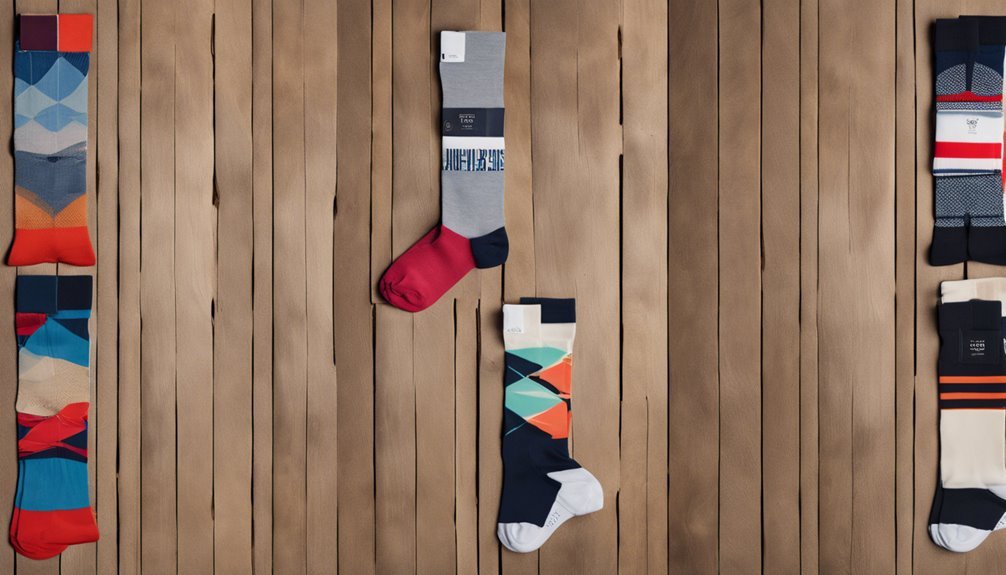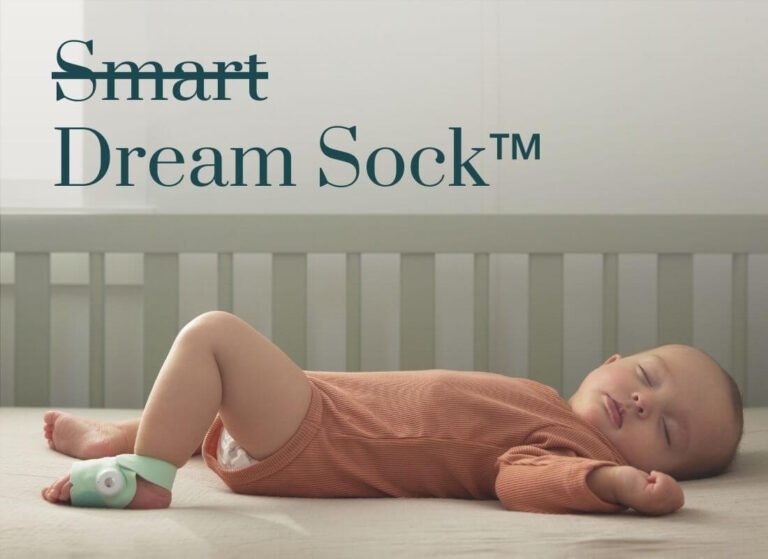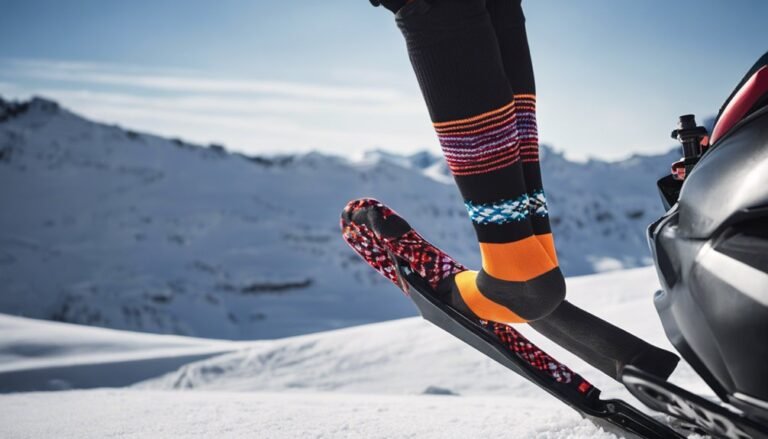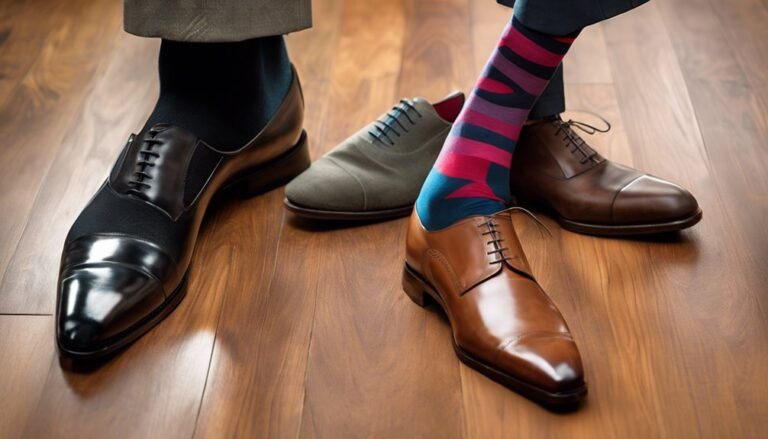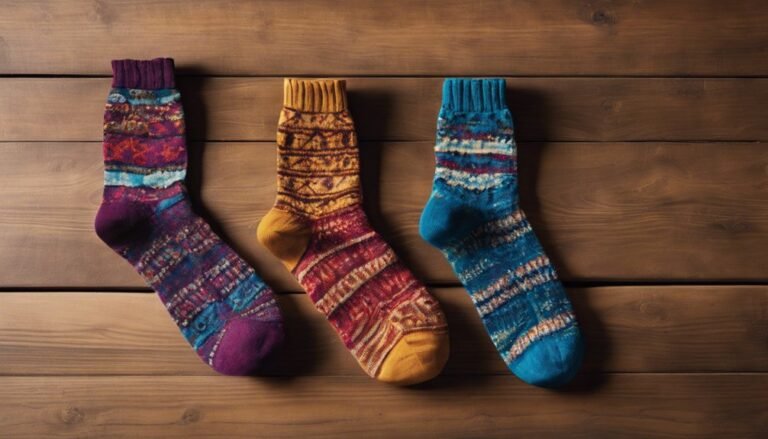Sports Socks vs. Casual Socks: What’s the Right Fit for Everyday Wear?
When choosing between sports socks and casual socks for everyday wear, consider their specific functions. Sports socks enhance performance with moisture-wicking technology and targeted arch support, making them ideal for high-intensity activities. In contrast, casual socks prioritize comfort and style, often made from soft materials for relaxed settings. Selecting the right type can improve your foot health based on your activities. Explore further to discover more on sock selection and care tips for your needs.
Understanding Sports Socks: Features and Benefits

When it comes to athletic performance, the right gear can make all the difference, and sports socks are no exception. These specialized socks are designed with features that enhance your performance, such as moisture management technology. This helps wick sweat away from your feet, reducing the risk of blisters and discomfort during intense activities. Additionally, sports socks often provide targeted arch support, which stabilizes your foot and helps prevent injuries. The combination of these features not only enhances comfort but also allows you to focus on your game without distraction. By investing in quality sports socks, you're not just adding gear; you're optimizing your performance and enjoying the freedom to push your limits. Your feet will thank you.
The Appeal of Casual Socks: Style and Comfort
Although many prioritize performance during physical activities, casual socks hold their own appeal, offering a blend of style and comfort that suits everyday wear. These socks are designed with comfort materials like cotton, bamboo, or modal, ensuring a soft feel against your skin. They often feature trendy designs that align with current fashion trends, allowing you to express your personality effortlessly. Unlike performance socks, casual socks aren't bound by strict functional requirements, giving you the freedom to choose styles that match your outfits—from vibrant patterns to classic solids. This versatility makes them ideal for both lounging at home and stepping out for casual outings. Ultimately, they provide a relaxed fit that prioritizes comfort without sacrificing aesthetic appeal.
Key Differences Between Sports Socks and Casual Socks
While both sports socks and casual socks serve essential roles in your wardrobe, they differ markedly in design, materials, and intended use. Sports socks focus on enhancing sports performance through specialized sock materials, such as moisture-wicking fabrics and added cushioning. These features help regulate temperature and reduce friction during intense activities. In contrast, casual socks prioritize comfort and style, often using softer, breathable materials like cotton or blends, which may lack the technical properties needed for athletic pursuits. Additionally, sports socks typically have reinforced areas for durability, while casual socks may feature more varied patterns and colors for aesthetic appeal. Understanding these key differences can help you make informed choices based on your daily activities and comfort needs.
Choosing the Right Sock for Your Activities

Selecting the right sock for your activities is essential, as it can greatly impact your comfort and performance. Different sock materials, such as cotton, wool, and synthetic blends, cater to various activity levels. For high-intensity sports, moisture-wicking materials provide breathability and help regulate temperature, keeping your feet dry. Conversely, during casual outings, cotton socks offer comfort and ease.
Consider the activity level when choosing socks; for instance, high-impact activities like running or hiking demand cushioning and arch support, while lower-intensity activities allow for more flexibility in sock choice. Ultimately, aligning sock materials with your specific activities not only enhances your performance but also contributes to overall foot health and well-being. Choose wisely to guarantee you're always at your best.
Care Tips for Maintaining Your Socks
To keep your socks in ideal condition, it's crucial to follow a few essential care tips that can extend their lifespan and maintain performance. Start with sock washing—always use cold water, as hot temperatures can damage elastic fibers and shrink the fabric. Opt for a gentle cycle to minimize wear and tear. Avoid fabric softeners, as they can reduce moisture-wicking properties. Instead, focus on fabric care by air-drying your socks; high heat can cause them to lose shape and elasticity. If you must use a dryer, select a low heat setting. Finally, store your socks properly—fold them rather than rolling to maintain their structure. By following these tips, you'll protect your investment and enjoy comfort for longer.
Frequently Asked Questions
Can I Wear Sports Socks With Casual Shoes?
You can definitely wear sports socks with casual shoes, depending on your style preferences. Fashion trends often embrace mixing styles, so don't hesitate to experiment and create a unique look that expresses your individuality.
Are There Specific Materials Best for Each Sock Type?
Imagine your feet dancing on clouds. For sports socks, look for materials like polyester for moisture management and breathability. Casual socks thrive in cotton's softness, offering comfort without the technical properties needed for active wear.
How Often Should I Replace My Socks?
You should replace your socks every 6-12 months, depending on wear. Look for signs replacement's needed, like thinning fabric or holes. For sock longevity tips, rotate your pairs and wash them properly to extend lifespan.
Do Sports Socks Have a Lifespan?
Sports socks do have a lifespan, typically lasting 6-12 months, depending on wear. Their durability impacts athletic performance; worn-out socks can lead to blisters and discomfort, so replace them regularly for best results during activities.
Can Casual Socks Provide Enough Support for Exercise?
Casual socks typically lack the support features necessary for rigorous exercise. While they may offer some exercise comfort, their design usually doesn't provide adequate cushioning or arch support, potentially leading to discomfort during physical activities.

